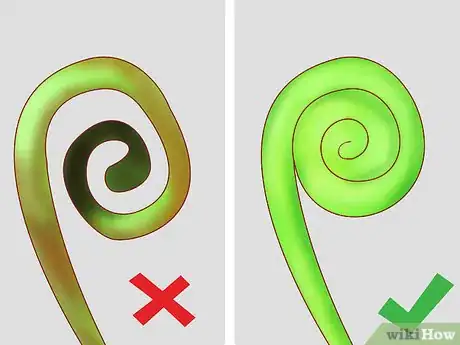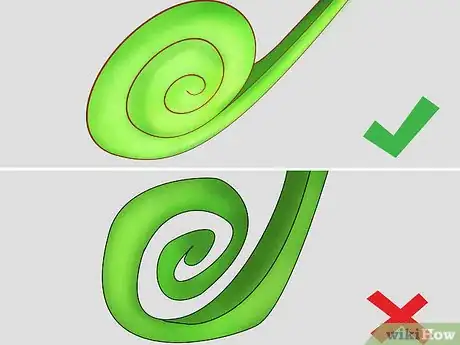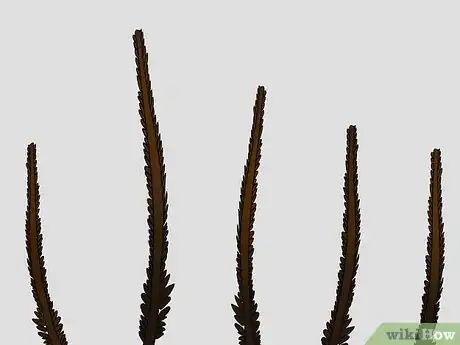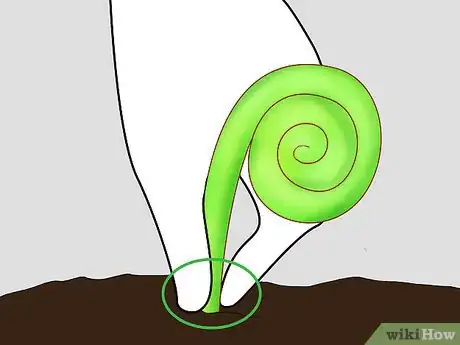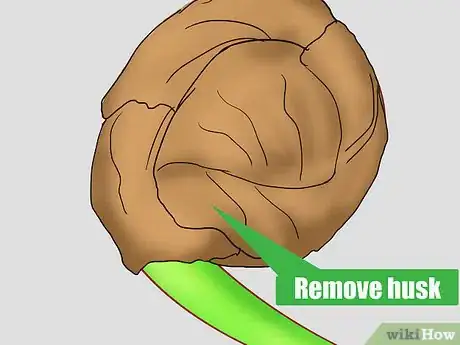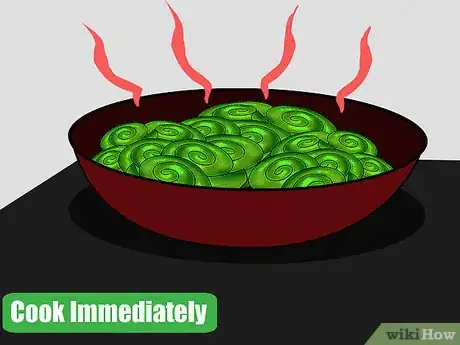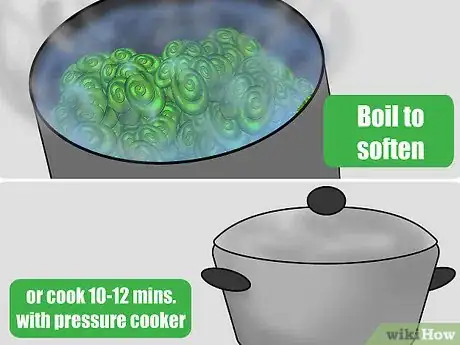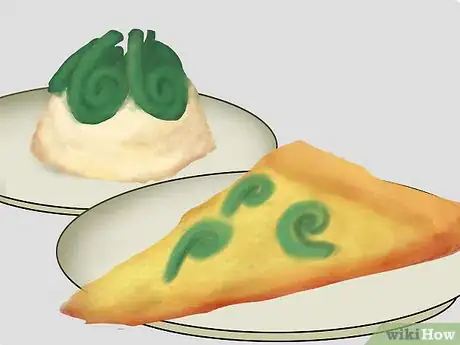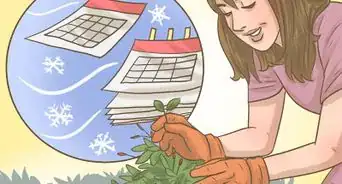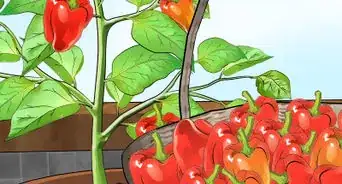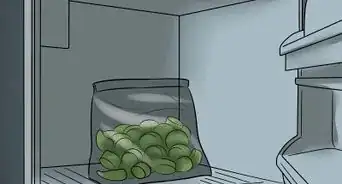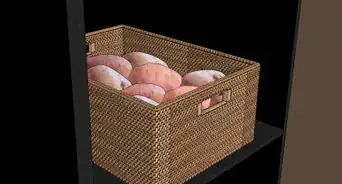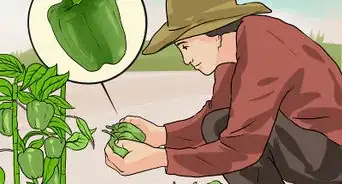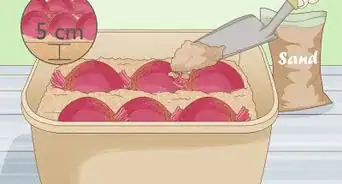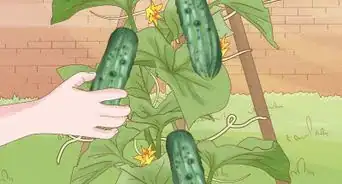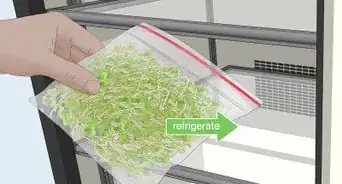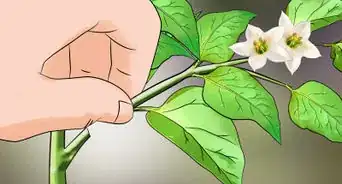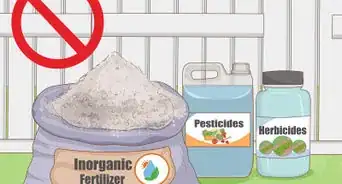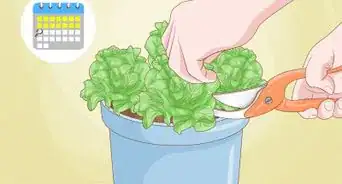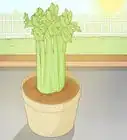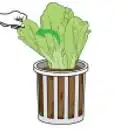This article was co-authored by wikiHow Staff. Our trained team of editors and researchers validate articles for accuracy and comprehensiveness. wikiHow's Content Management Team carefully monitors the work from our editorial staff to ensure that each article is backed by trusted research and meets our high quality standards.
There are 8 references cited in this article, which can be found at the bottom of the page.
This article has been viewed 20,100 times.
Learn more...
Fiddleheads, also known as fiddlehead greens, are the coiled fronds of young ostrich fern plants. These peculiar seedlings take their name from their resemblance to the carved scroll on the top of a fiddle. Fiddleheads are harvested as vegetables and considered a springtime delicacy in many places, including parts of North America, Australia and Western Europe. If you happen to come upon a fresh growth of fiddleheads in the wilderness, you might be pleased to discover that they can be eaten as-is. It is important, however, to know just what to look for when foraging for fresh fiddleheads in order to avoid illness and fully enjoy this rare botanical treat.
Steps
Identifying Fresh Fiddleheads
-
1Notice the color. Ostrich fern fiddleheads are most often a gleaming jade-green color. The fiddleheads that are ripe for eating will always be a bright green hue, though this may sometimes be hidden by a thin, brown, papery skin covering the outside of the stalk. Stay away from fiddleheads that have an inconsistent discoloration or appear dark and mottled, as these may be rotten.[1]
- Keep a sharp lookout. The brown, scale-like skin of ostrich fern fiddleheads can make them practically invisible in dim, wooded surroundings.
- Dark green fronds might be other types of fiddlehead ferns, like shield, wood, or lady fern, and may be unsafe to ingest.[2]
-
2Choose fiddleheads with tightly-coiled fronds. The best fiddleheads will be smooth and firm to the touch, with coils that are wrapped tight and haven’t yet begun to sprout foliage. Inside the enclosed fronds there should be a bushy growth that will go on to become the broad leaves of the fern. Pass over fronds that are loose or beginning to unravel. This is a sign that they’re likely past their prime.[3]
- Other types of fern fiddleheads exist that are inedible or even poisonous. These ferns usually have slightly different characteristics, such as bent, fuzzy tendrils or fronds in shapes other than spirals, though it can often be difficult to tell a difference.
- Unless you’re certain that the fiddleheads you’re looking at are of the ostrich fern variety, you should not attempt to handle or consume them. Doing so may put you at risk of of serious illness.[4]
Advertisement -
3Check for a groove in the stem. Along the inner edge of the stalk where it wraps into the coil, you should find a deep U-shaped depression, much like a stalk of celery. The groove is used to transport nutrients up through the stalk to the fronds of the mature fern. This is one of the key features that can tell you that what you’ve discovered is indeed a fiddlehead of the ostrich fern variety.[5]
- Ignore fern fronds with flat, round or fuzzy stalks.
- The stems of ostrich fern fiddleheads can be eaten along with the fronds. Just snip off the brown roots tips before washing and cooking them.
-
4Look around for spore sticks. Fiddleheads reproduce by spreading spores, which are located on long, brown sticks that poke out of the ground around the edible green stalks. They are ordinarily found near water or in marshy wetlands. The spore sticks tend to be tall, which allows them to be seen from a distance. If you happen to catch sight of these, it means there are fiddleheads close by.[6]
- Fiddlehead spores use flowing water to reproduce, so be sure to check for them along the banks of any bodies of water you happen upon.
- Scan for fiddleheads growing nearby in clusters of five to nine fronds.[7]
-
5Research different types of fiddleheads. Ostrich fern fiddleheads are just one variety of fiddlehead green. There are many others, including some that may not be safe to eat or cook with. When you’re out foraging for fiddleheads, avoid similar plants that feature stalks or fronds of different shapes and colors. Though these may not be harmful to ingest, it’s better not to take the chance.[8]
- Pay close attention to pictures and descriptions of ostrich fern fiddleheads to avoid confusing them with other types of inedible ferns.
Foraging for Fiddleheads
-
1Search in wet, wild areas. Ferns love moisture, and for this reason you’ll typically find clusters of wild fiddleheads springing up near the banks of rivers, lakes and streams in cold, wet climates. You’ll often be forced to travel well off the beaten path in order to come across a crop of fiddleheads. This just makes finding and picking a big handful of them more fun.[9]
- In North America, the funny green stalks usually begin to poke up around April, May and early June, and they aren’t around long before they grow into lush adult ferns.[10]
- Fiddleheads are a fairly common sight throughout various parts of Maine, Alaska, New Zealand, Canada and even Southeast Asia.
-
2Pick the fiddleheads by the stem. To harvest fiddleheads, simply grab them down low on the stalk and pluck them free in one quick motion. You can also use a pair of sharp scissors to snip the fiddleheads from their stems if you’re harvesting a lot of them at one time. The stems themselves should be tough and have a bit of give—if they’re brittle, there’s a good chance they’re dead or diseased.[11]
- Go after the fiddleheads that are still standing. Never pick loose fiddleheads up off the ground.
- Leave at least one or two fronds intact, or the plant will die.[12]
-
3Brush off any foliage clinging to the fronds. When you’re seeing fiddleheads for the first time, you’ll probably notice that they’re partially covered with a kind of brown, scale-like husk. This fibrous material should be removed prior to cleaning and eating the fiddleheads. Just run your fingers down the length of the stalk and fronds to brush away the flaky skin.[13]
- Soaking the fiddleheads in lukewarm water can help loosen tough, fibrous skin.
- This outer shell is not harmful to eat, though it may get stuck in your teeth or cause textural issues.
Eating Fiddleheads
-
1Rinse the fiddleheads thoroughly. Like any other freshly-picked vegetable, you’ll want to wash the fiddleheads before you consume them. Place the fiddleheads in a strainer and run them under a stream of cool water to clean away dirt, insects and any remaining bits of brown skin. Pat the fronds dry with a paper towel, cut away the stalks and they’re ready to go in your favorite recipes![14]
- You can also soak the fiddleheads in a bowl of water for 5-10 minutes for a more thorough cleaning. Soaking may reduce the vegetable’s crunchiness, however.
- Rinse the fiddleheads as soon as you bring them home, even if you don’t intend to eat them immediately.
-
2Cook and eat the fiddleheads right away. Fiddleheads are best enjoyed while they’re fresh. This is when they’ll have the crispiest texture and the brightest, most intense flavor. The curled fronds of the fiddleheads are the part that are most commonly devoured, though the stalks are also edible. Freshly-picked fiddleheads are a fleeting delicacy that can only be savored during spring’s wet season.[15]
- Shortly after being picked, fiddleheads will begin to lose their color, flavor and crunch.
- Wrap uneaten fiddleheads in plastic and place them in the produce drawer of the refrigerator to store them. The tasty fronds will keep for a week or two in cool, dry places.
-
3Boil or steam fiddleheads to cook them. Submerge a bundle of fresh fiddleheads, stalks and all, in a pot of boiling water to soften them, or steam them in a pressure cooker for 10-12 minutes. Their flavors can vary depending on their age, freshness and growing conditions, but are generally similar to green beans, asparagus and other green stalky vegetables.[16]
- The fiddleheads will darken slightly when they're done. Avoid overcooking them, as this can make them mushy.
- Cooking with high heat is necessary to eliminate bacteria and trace amounts of toxins contained in the plant. Fiddleheads should never be eaten raw.[17]
-
4Incorporate fiddleheads into your favorite dishes. Find creative uses for fiddleheads in recipes where you would ordinarily use green beans or asparagus, or simply serve them on their own to highlight their unique flavor and appearance. The crunchy greens can be cooked whole with butter or oil and offered as a side, chopped up and added to soups and pasta dishes or chilled and used to top a spring salad.[18]
- If you don't plan on serving them right away, you can preserve the fronds and make them even more flavorful by pickling them in apple cider vinegar with salt, black peppercorns, mustard seed, allspice and garlic.[19]
- Make fiddleheads a staple in your fresh springtime cuisine before they're gone for another year.
Warnings
- Be extremely careful and always make sure the fiddleheads you pick come from ostrich ferns. Bracken ferns, another kind of fiddlehead green that is often harvested for food, have been linked with growing incidents of cancer, and should never be eaten.⧼thumbs_response⧽
- Consuming raw or undercooked fiddleheads could result in food poisoning symptoms such as cramps, nausea, vomiting, diarrhea or even intestinal bleeding.⧼thumbs_response⧽
References
- ↑ https://food52.com/blog/6583-fiddlehead-fern-a-controversial-coil
- ↑ http://plants.alaska.gov/pdf/Fiddleheads.pdf
- ↑ http://www.gracelinks.org/2296/real-food-right-now-and-how-to-cook-it-fiddleheads
- ↑ https://extension.umaine.edu/publications/4198e/
- ↑ https://extension.umaine.edu/publications/4198e/
- ↑ https://munchies.vice.com/en/articles/fiddleheads-are-the-beyonce-of-foraged-foods
- ↑ http://www.gracelinks.org/2296/real-food-right-now-and-how-to-cook-it-fiddleheads
- ↑ https://food52.com/blog/6583-fiddlehead-fern-a-controversial-coil
- ↑ http://fearlesseating.net/fiddleheads/
- ↑ https://extension.umaine.edu/publications/4198e/
- ↑ https://munchies.vice.com/en/articles/fiddleheads-are-the-beyonce-of-foraged-foods
- ↑ http://fearlesseating.net/fiddleheads/
- ↑ http://fearlesseating.net/fiddleheads/
- ↑ https://munchies.vice.com/en/articles/fiddleheads-are-the-beyonce-of-foraged-foods
- ↑ http://fearlesseating.net/fiddleheads/
- ↑ https://food52.com/blog/6583-fiddlehead-fern-a-controversial-coil
- ↑ https://extension.umaine.edu/publications/4198e/
- ↑ http://www.foodnetwork.ca/healthy-eating/photos/best-fiddlehead-recipes-for-spring/
- ↑ http://www.seriouseats.com/2012/04/in-a-pickle-pickled-fiddlehead-ferns.html
